The Dreaming Way Tarot and Lenormand
Posted by palabomeno on Oct 21, 2018
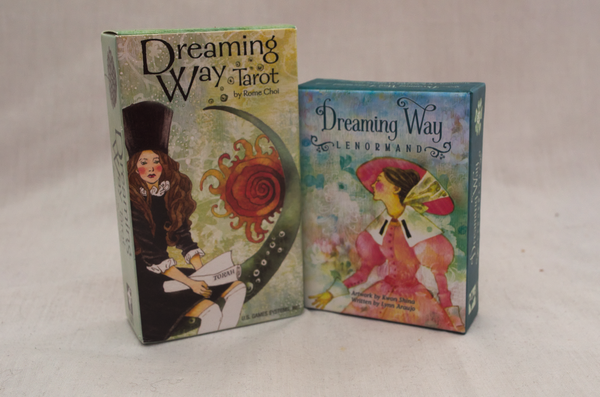
The Dreaming Way Tarot and the Dreaming Way Lenormand are two divinatory decks released by US Games in 2012 and 2016, respectively. Both decks are illustrated by Kwon Shina; the tarot deck was written by Rome Choi, and the Lenormand deck was written by Lynn Araujo.
Find out what we think after the jump.

The packaging for both of these decks isn’t very good. The tarot deck has it the worst - the deck box is so small, I can barely fit the cards back into it! When we first opened the box the plastic shrink wrap around the deck was so tight it crinkled the corners of the booklet. The Lenormand deck is better packaged, but it’s in one of those vacuum-sealed boxes that you have to slowly slide open. The small size of the box means that it takes a lot of wiggling to get it open - which can mean the bottom of the box flies off, throwing cards everywhere.
The tarot deck came with one “cover” card and one “credit” card, which included a short biography on the deck’s artist and author. The cards are just ever-so-slightly bigger than a standard tarot card by only a few millimeters. The card backs aren’t perfectly symmetrical, so it could make using reversed cards in your deck a little difficult. Kwon isn’t credited on the box of the tarot, so the credit card and the cover of the included booklet are the only places her name is included.
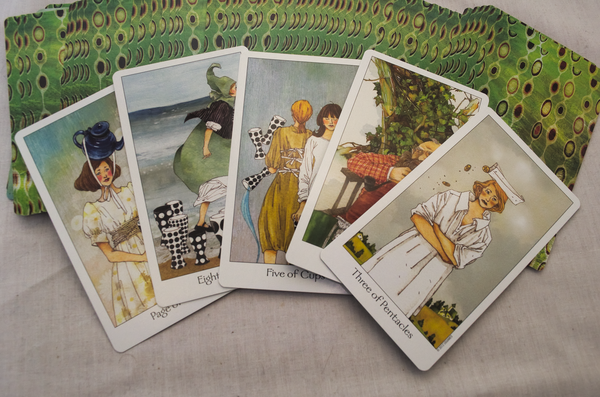
These cards are gorgeous. Kwon’s artwork is the number one draw to this deck. Her ethereal watercolor style provides the cards with a dreamy lightness that makes this deck stand out between all others. Even if you are not a tarot enthusiast, I would say this deck makes a great buy just to own 78 individual illustrations by Kwon. We cannot get enough of her art! The design of the cards is clearly drawn from the standard Waite-Smith tradition, but the individual cards spark with original interpretation of the classic Waite-Smith mindset. The World, for example is illustrated as an elderly man sleeping against a tree, at peace. The Wheel of Fortune is an angel, mending a tangle spinning wheel. Death is portrayed as a young woman in a black dress, grimly holding a scythe. The Three of Pentacles is a young woman with a bag balanced upon her head that three coins are falling out of. I am inspired by these interpretations - it speaks to someone who intimately understood the meaning of each card, rather than just its imagery.
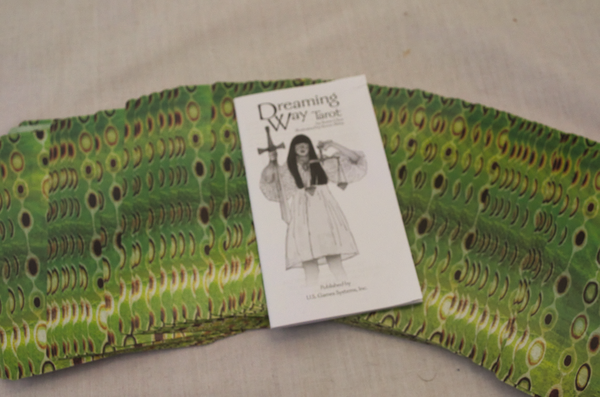
The booklet that comes with it is a bit of a disappointment, though. Bound only in paper with a single staple, it doesn’t go particularly in-depth into the meaning of the tarot. It’s a very simple book that only provides the simplest meanings of each card without discussing the intent of the artist. This is standard for US Games; their copy of the Waite-Smith has only a few excerpts from Waite’s book, The Pictorial Key to the Tarot. Most interesting in the booklet is a small segue in the middle, which describes the elemental, spiritual, and physical connotations of each card suit. This is also accompanied by a list of the 10 different pip cards, and a generic guide to what each pip generally means aside from their suit meanings. I don’t really agree with some of these generic pip card meanings - such as fours meaning “Conservative”, which I feel is contradicted directly by the Four of Wands. The booklet also includes a single spread, a “Dreaming Way Five-Card” spread.
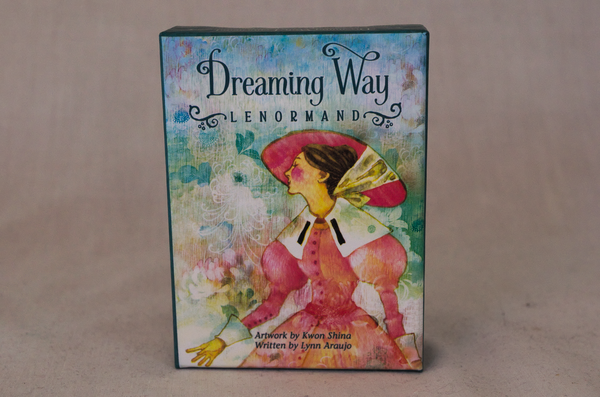
The Lenormand deck, also illustrated by Kwon, is similarly gorgeous. Owning both of these decks is a delight - their work in perfect harmony with each other. Unlike the tarot, the Lenormand deck is borderless, so the art extends all the way to the edge of the card. This gives you the most area possible for Kwon’s art - Lenormand decks are only standard playing card sized - but it worries us that the wear on the edge of the cards over time would affect the art, as well.
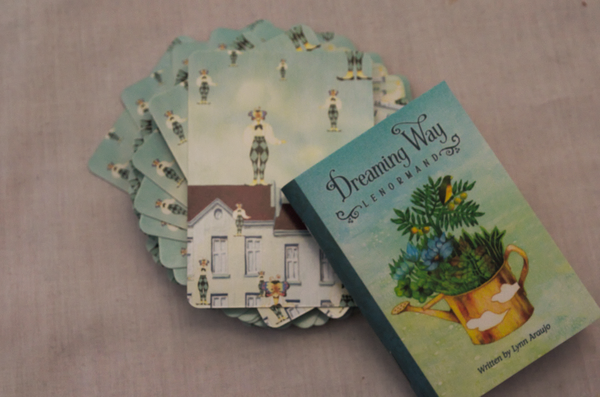
The booklet that comes with the Lenormand is substantially superior over the one that comes with the tarot. Each card gets a full two pages describing its meanings, and the booklet is bound with a real thin card “cover”, though it’s still bound with a staple. It also includes three different spreads: a two card, a five card, and a custom ten card “spiral” spread. It doesn’t mention anything about specific pairing meanings, which are a significant factor in reading the Lenormand.
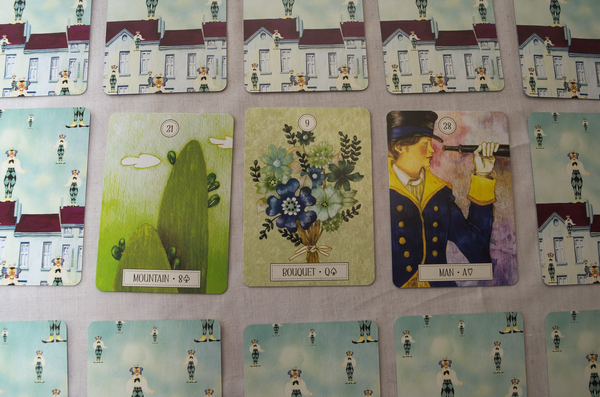
However, the Dreaming Way Lenormand changes the Crossroads card into a more vague “Choices” card. This is the only significant change to the deck, aside from changing the pluralization of a few cards. It’s not an extremely significant change as the underlying intent of the Crossroads card is still understandable, but it may confuse absolute newcomers who won’t know where to find the Crossroads card other Lenormand guides would refer to.
I recommend both of these decks for experienced tarot or Lenormand readers who are looking for an artistic delight in their collections. A beginner reader might be attracted to these cards but I would make sure that you know what you are in for before getting these as your very first deck. The artwork - and especially the change made to the Lenormand - might obfuscate the immediately obvious meanings of the card for someone who doesn’t already know them. While the booklet for the Lenormand will help a beginner otherwise figure out the cards, the tarot’s book won’t illuminate much for a tarot newcomer. The Lenormand booklet not covering the meanings of card pairings is another big stumbling block. While it wouldn’t be hard for a reader to see the meanings of two cards at once for themselves, many Lenormand readers treat pairings of cards as seriously as tarot readers treat individual card draws.
The Dreaming Way decks are incredible. They’re now the crown jewels of my card collection, and I see that we’ll be using them for a long time to come. If you think a good cartomancy deck means top-notch art, the Dreaming Way decks are for you too.
Categories: toys
Tagged: tarot
On this day...
- A Trough of Buff (Oct 21, 2014)
- Banjo Kazooie's Spooky Moments (Oct 21, 2015)